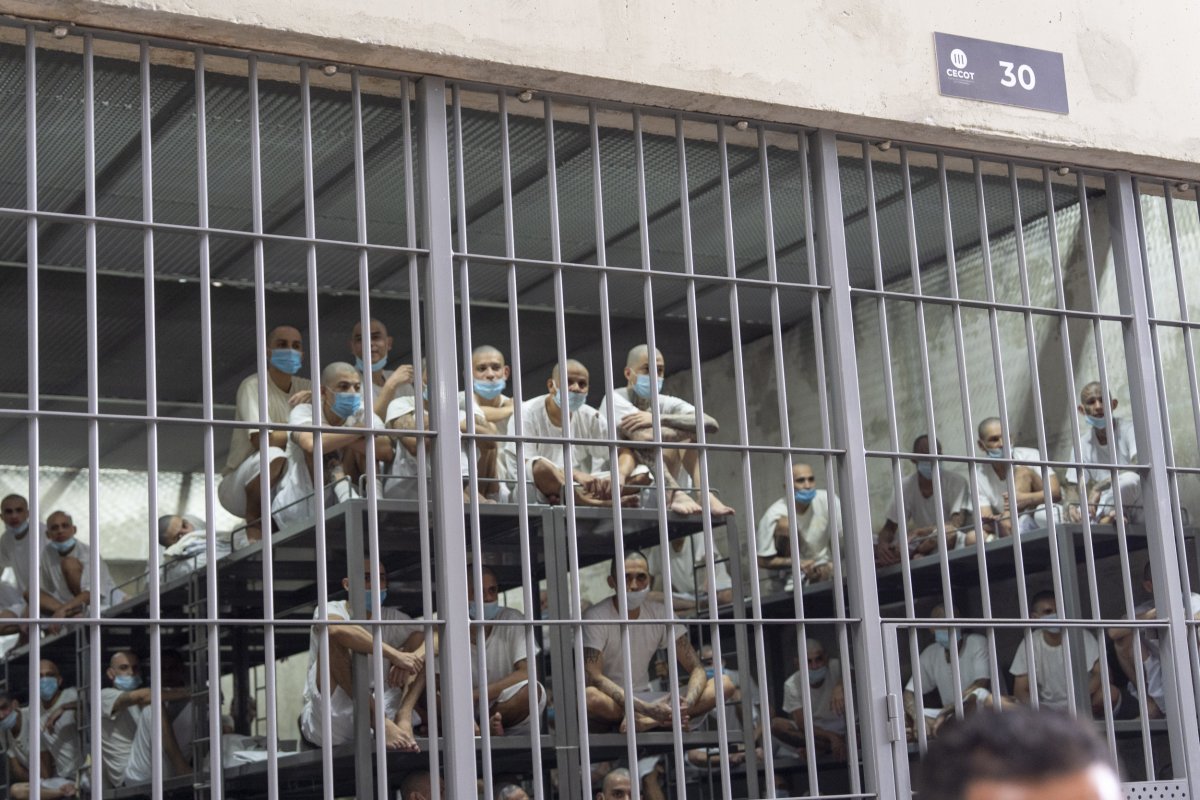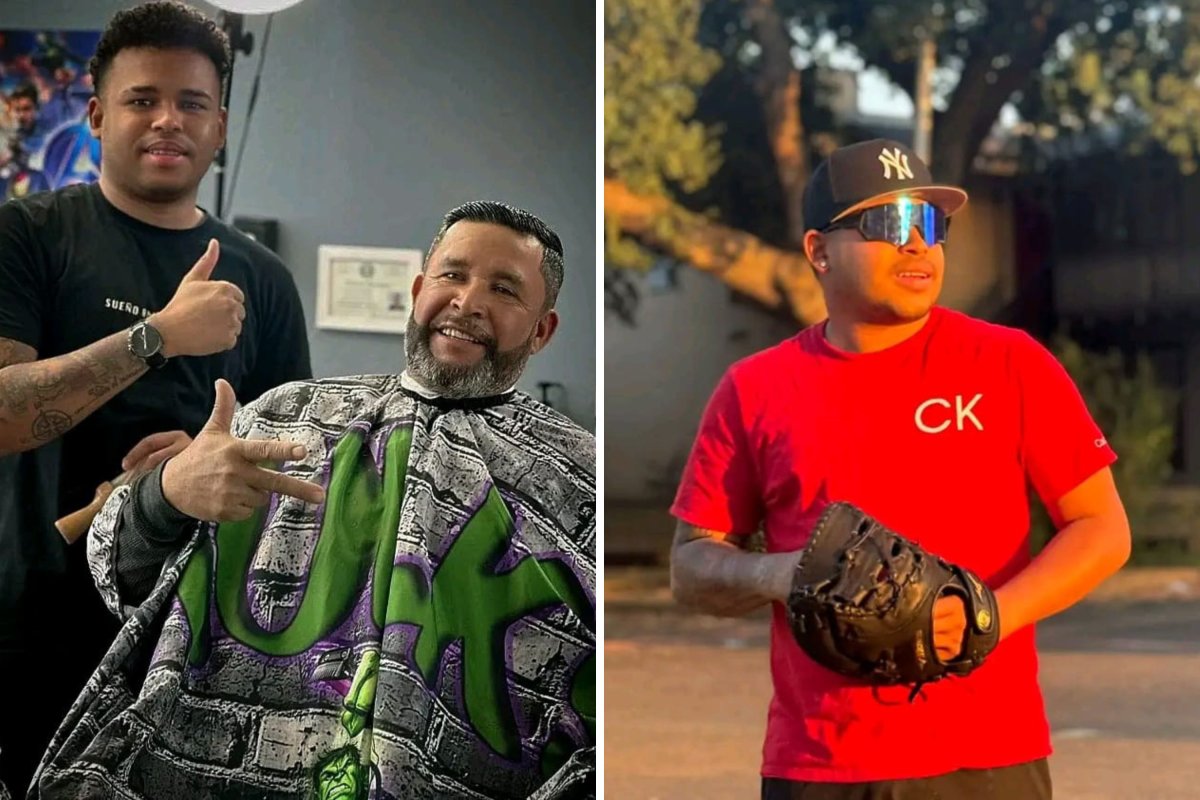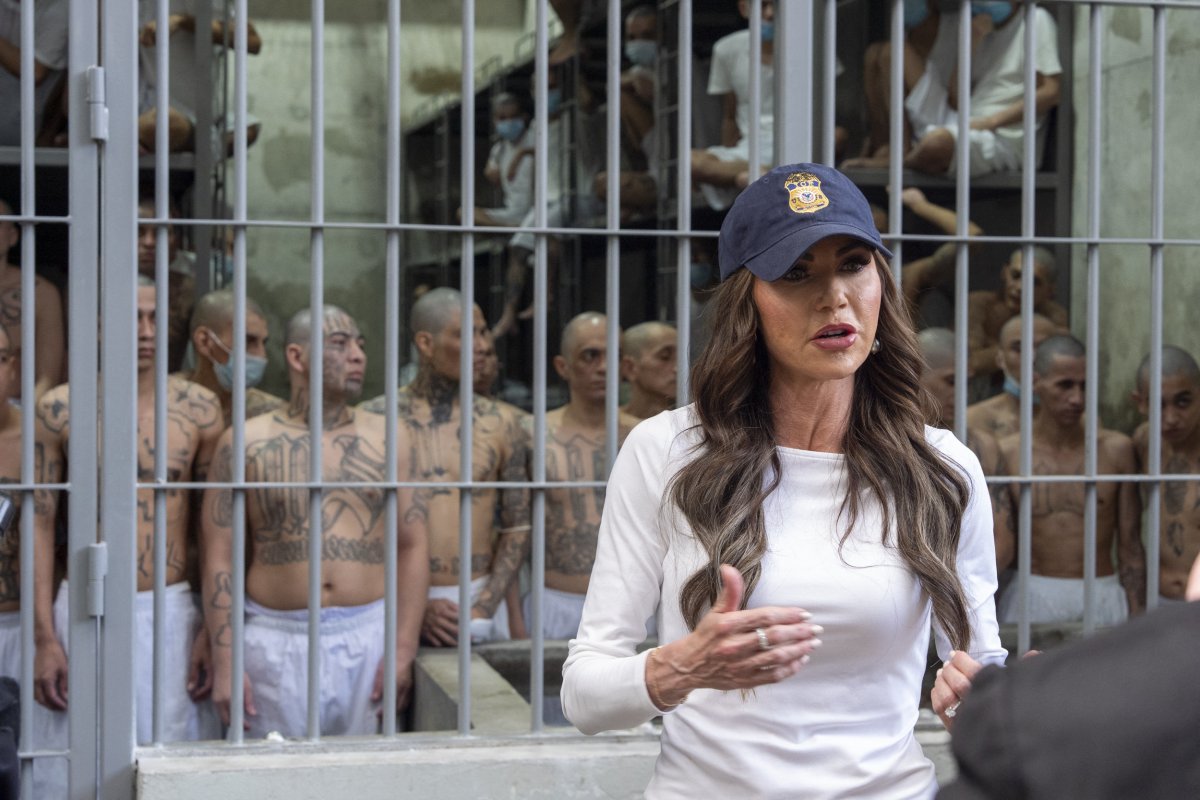Table of Contents
When Francisco Javier Casique boarded a deportation flight in March, U.S. immigration officers assured him repeatedly that he was being sent home. “Don’t worry,” they told him. “You’re going to Venezuela.”
Instead, the plane landed in El Salvador — and Casique, still shackled, found himself inside one of the world’s most notorious prisons.
“We were labeled as terrorists without evidence,” Casique told Newsweek in an exclusive interview after his release from El Salvador’s Center for Terrorism Confinement, known as CECOT. “We had no rights, no charges, no lawyers.”
Casique is one of 252 Venezuelan nationals who were deported by the United States and secretly transferred to CECOT — only to be later released as part of a July prisoner exchange between Washington and Caracas. Only seven of the migrants had serious criminal records. Many, like Casique, had none in either Venezuela or the U.S.

Photo by Alex Brandon / POOL / AFP) (Photo by ALEX BRANDON/POOL/AFP via Getty Images
The notorious supermax prison, built by Salvadoran President Nayib Bukele to house violent gang leaders, held the Venezuelan migrants for four months in what Casique and others describe as conditions akin to torture.
‘I Was Never Hiding’
Casique had crossed the border into the United States in December 2023, entering at the Piedras Negras point-of-entry and turning himself in to U.S. authorities. He was released days later, wearing an ankle monitor, and began working as a barber in Texas. Though he had a standing deportation order, he said he planned to comply with it and return to Venezuela once he had earned enough to support his family.
“I was never hiding,” Casique said. “I just wanted to work and go back home.”
Instead, he was arrested again on February 6 of this year. Held in a Texas detention center through mid-March, he said officers gave every indication that he would be returned to his home country. “They told us Venezuela. Every time I asked, they confirmed. It made me feel calmer,” he said.

AP Photo/Alex Brandon
But once the plane landed, the deception became clear. They later discovered the flight was part of a secretive U.S. transfer program, authorized by the Trump administration under the 1798 Alien Enemies Act, which allows the president to deport individuals from “enemy nations” without standard legal procedures.
“We looked out the window and the sign said: ‘El Salvador International,'” Casique said. “On the plane, they told us it was a ‘surprise.’ Some guards wouldn’t say anything. Some said, ‘Don’t worry.’ But we were confused and anxious.”
His mother, Mirelys Casique, learned of the transfer through a video posted online by the Salvadoran government. “It’s him. It’s him!” she told Newsweek in March, recognizing Francisco by his tattoos. “They shaved his head, beat him, and forced him to bow,” she said. “They treated him like a criminal, like a dog.”
Hunger and Blood Strikes, Beatings
Once off the plane, Casique said he was shackled and thrown into a bus. “One guard grabbed me by the hair, slammed my head to the bus floor, and threw me into a seat,” he said. “Then they added more restraints — wrists, ankles, and a chain to the seat.”
Inside the prison, he was beaten, stripped, and forced to change into a white uniform. “They kept hitting us while yelling at us to hurry,” he said. “We could hear others screaming.”
There were no mattresses, no showers without threat of beatings, and only a bucket for a toilet. “It was cold, and we were sore all over,” he said. “You showered at 4 a.m. or got hit.”

Courtesy of Mirelys Casique
Similar accounts have emerged from multiple ex-detainees, including Rafael Martínez and José Mora, who told CNN they were shot with rubber bullets, denied medical care, and subjected to daily beatings while incarcerated inside CECOT. “It was a nightmare. I heard many brothers asking for help, shouting, ‘Mom, help!'” Martínez told CNN.
Casique said he and others launched a protest after witnessing a fellow inmate beaten while shackled. “Some of us cut our legs, others went on hunger strikes. We made signs using toothpaste that said ‘We are not terrorists, we are migrants.'” But their protest was met with more violence. “They beat us more,” he said.
Julio González Jr., another deportee, told The Washington Post that guards fired rubber bullets at the men after a hunger strike. “They played with our minds,” González said. “They tortured us mentally and physically.”
‘Staged’ U.S. Visits Inside CECOT
Casique confirmed what he called “a show” put on during visits by U.S. officials. “They gave us good food, cold juice, and staged religious services — all for photos,” he said. “The Americans never spoke to us. We screamed for help, but they just took pictures and left.”

ALEX BRANDON/POOL/AFP via Getty Images
Among those visitors was U.S. Secretary of Homeland Security Kristi Noem and former Rep. Matt Gaetz, who toured CECOT with Rep. Anna Paulina Luna and a camera crew from the right-wing network One America News. Casique’s mother recognized her son again in footage shared from that visit.
“My soul hurts,” she told Newsweek in May. “He’s very thin. But that sign — asking for help — it’s been hard to see. But also a relief. Because he’s alive.”
Casique is now back in Venezuela following the prisoner exchange. He bears bruises, but no permanent injuries. Still, he wants justice. “We’re discussing legal action,” he said. “What they did to us was illegal — the abuse, the transfer, the psychological trauma. It can’t go unpunished.”
Asked by Newsweek to respond to those allegations, the State Department said: “We would refer you to the Government of El Salvador.”
Full Interview with Francisco Javier Casique
Q: Francisco, let’s start from the beginning. How did this all begin?
I was sleeping, getting rest for work, and the police came without warning. They knocked on the door, and when I saw it was them, I opened. They came in aggressively, knocked me down, started hitting me, and said I was under arrest.
Q: When exactly was this?
February 6.
Q: So you were detained for about a month before being transferred in March?
Yes, I was held through February and into mid-March.
Q: What were the conditions like in detention? Could you communicate with your family?
Yes, we had access to tablets to write to officers and talk to our families. I already had a deportation order, and since Venezuela was receiving deportees, I thought I’d be sent there. So I just waited.
Q: They always told you Venezuela was the destination?
Yes. I asked, and they confirmed I would be deported to Venezuela. That made me feel a little calmer.
Q: What was the deportation day like?
I was in a detention center in Laredo, Texas. The officers said, “You’re going to Venezuela, don’t worry.” We were happy. They said the planes were ready.
Q: When did you realize it was El Salvador instead?
When the plane landed and we looked out the window — the airport sign said “El Salvador International.” On the plane, they told us it was a “surprise.” Some guards wouldn’t say anything, some just said “don’t worry,” but we were confused and anxious.
Q: Were you made to sign anything on the plane?
Some people said they were handed documents, but we refused because we didn’t understand what they were. One officer said, “If you don’t sign, I’ll sign it for you.”
Q: What happened when you got off the plane?
It was terrible. As soon as we got off, they started beating us. I had shackles on and couldn’t move. One guard grabbed me by the hair, slammed my head to the bus floor, and threw me into a seat. Then they put on more restraints — wrists, ankles, and a chain to the seat.
Q: When were those shackles put on?
The first set was put on when we left the U.S. detention center. After landing, they added more.
Q: How did they change you into the white prison uniforms?
We could hear others screaming. They shaved our heads, hit us, stripped us naked, and yelled at us to put on the uniforms quickly. All of this happened while they kept hitting us.
Q: What were they hitting you with?
Batons — especially on the head, since it was shaved.
Q: Did they ever explain what was happening?
No. They forced us into a module. I was so weak I couldn’t walk or talk. One guard yelled at me to keep going. Eventually, the prison director told us we were in a “center for terrorists” and that we’d spend the rest of our lives there. He said we had no rights and that the only thing we’d have was what we were wearing.
Q: What was your first night like?
Everyone was crying. I didn’t know what was going on. My body hurt, but I was numb. We lay on metal sheets and tried to sleep.
Q: How were the living conditions in the cell?
No mattresses for a long time. Just a water jug and a bucket. We had to shower early in the morning or get beaten. It was cold, and we were sore all over.
Q: How did you use the bathroom?
There were two sections in the same bucket — one for urinating and one for defecating. We got used to it. They used the same water to flush it.
Q: What were you fed?
Usually rice with beans or spaghetti and tortillas. To drink, just water.
Q: Did they treat you differently when U.S. officials visited?
Absolutely. They’d give us good food, cold juice, and clean everything just for show. It was fake. They did the same with religious services — they were staged for photos.
Q: Did the U.S. officials ever speak to you?
No. They came in with cameras, stood in the middle of the module, took photos, and left. We screamed for help, but they never responded.
Q: When did you learn you were being sent back to Venezuela?
One morning they woke us up and said to shower and get ready. That was it. A guard whispered that it would be our last meal.
Q: What was it like leaving the prison?
We were scared, not knowing where we were going. But then we saw Venezuelan officials at the airport, and that’s when we finally cried and felt relieved.
Q: Did you have lasting injuries?
Just bruises that faded — purple legs, arms, and scratches on my back. Nothing permanent, thankfully.
Q: Can you describe your tattoos?
I have tattoos for my mom’s birthdate, praying hands for my family, a dragon, compass, a Bible verse, and one I got with a girlfriend in the U.S. We both got matching designs.
Q: Did you or others ever try to protest or resist the abuse?
Yes. We were tired of the beatings. Some of us cut our legs, others went on hunger strikes. We made signs using toothpaste that said things like “We are not terrorists, we are migrants.” We taped them to the walls so officials could see them.
Q: Did that change anything?
At first, no. They beat us more. But eventually, some guards started to speak to us, telling us to calm down and saying things might change. We were given mattresses and sheets for the first time. The abuse eased slightly.
Q: Was there a specific incident that pushed you to protest?
Yes. One day, they made a detainee kneel while shackled and beat him. That’s when we erupted — throwing water, soap, anything we had. We couldn’t take it anymore.
Q: Did you hear the names of any guards?
Yes. Two main ones — “Satan” and “Moto Moto.” They gave all the orders. If you looked up or didn’t kneel during inspections, they beat you.
Q: Do you want to return to the U.S.?
No. I’m with my family now. The U.S. offers better work, but life there isn’t what people think. I was never hiding. I had a deportation order and just wanted to work and return home.
Q: How did you enter the U.S.?
I crossed through Piedras Negras on December 18, 2023. I turned myself in. But I lost the address I was supposed to go to and couldn’t retrieve it without my phone, which they wouldn’t let me use. They asked about tattoos, took photos, and released me days later.
Q: Have you thought of taking legal action?
That what happened to us was a crime. We were labeled as terrorists without evidence. We had no rights, no charges, no lawyers. People say we’re lying or exaggerating — but we lived through hell. And I hope one day, those responsible face justice.


